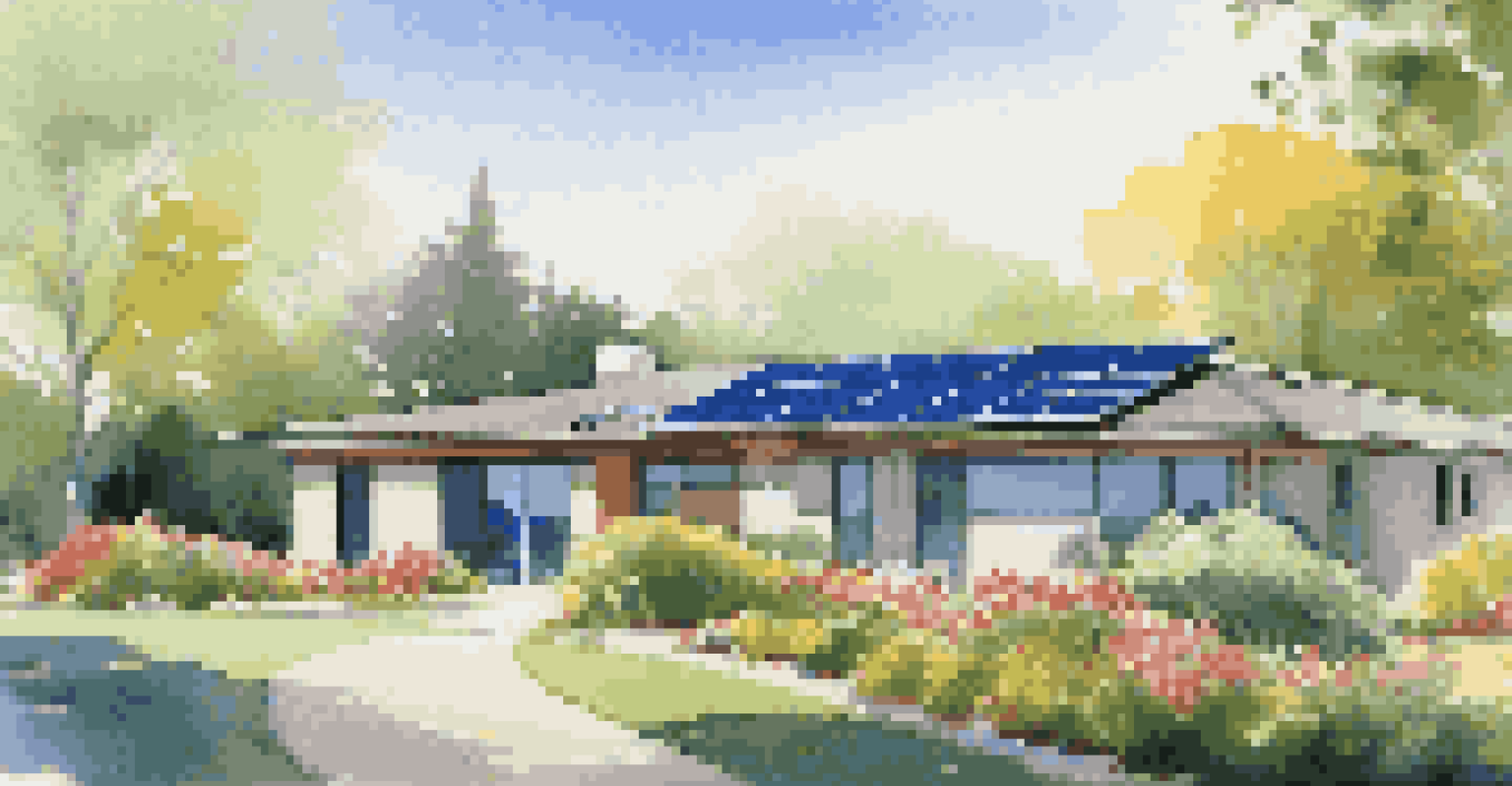How to Make Your Home More Energy-Efficient with Tech

Understanding Energy Efficiency and Its Benefits
Energy efficiency refers to using less energy to provide the same service. By enhancing your home's energy efficiency, you can save money on utility bills while also reducing your carbon footprint. It's a win-win situation where your wallet and the environment both benefit.
The greatest threat to our planet is the belief that someone else will save it.
When you implement energy-efficient technologies, you're not just making a smart choice for your home; you're also contributing to a larger movement toward sustainability. For example, using less energy means less demand on power plants, which can lead to fewer emissions and a healthier planet.
Moreover, energy-efficient homes often have higher property values. Potential buyers are increasingly looking for homes that minimize energy costs, making your tech upgrades a smart investment for the future.
Smart Thermostats: A Simple Upgrade for Big Savings
One of the easiest ways to start your energy-efficient journey is by installing a smart thermostat. These devices learn your temperature preferences and adjust settings automatically, ensuring your home is comfortable only when you need it to be. Imagine coming home to a cozy house without wasting energy during the day when you're away.

With a smart thermostat, you can also control your home's temperature remotely via a smartphone app. This means you can adjust the heat or air conditioning while you're at work or even on vacation, preventing energy waste and saving you money.
Energy Efficiency Saves Money
Enhancing your home's energy efficiency can lead to significant savings on utility bills while also benefiting the environment.
Many smart thermostats even provide energy reports to help you understand your usage patterns. This insight empowers you to make informed decisions about your heating and cooling habits, further enhancing your home's energy efficiency.
LED Lighting: Bright Ideas for Energy Savings
Replacing traditional incandescent bulbs with LED lighting is another easy yet impactful tech upgrade. LEDs use significantly less energy and last much longer than their incandescent counterparts. For instance, an LED bulb can last up to 25,000 hours, compared to just 1,000 hours for a standard bulb.
Energy efficiency is not just a goal; it is a necessity for our future.
Not only do LEDs save energy, but they also produce less heat, reducing the need for air conditioning in warmer months. This can lead to substantial savings on your energy bills over time. Just think about how many bulbs you have in your home—those savings can really add up!
Additionally, many LED fixtures now come with smart features, allowing you to adjust brightness levels and color temperatures based on your mood or time of day. This versatility not only enhances your home's aesthetic but also provides further energy savings.
Energy-Efficient Appliances: Invest in the Future
When it's time to replace old appliances, consider energy-efficient models. Look for the ENERGY STAR label, which indicates that the appliance meets strict energy efficiency guidelines. For instance, a new ENERGY STAR refrigerator can use about 15% less energy than a standard model.
Investing in energy-efficient appliances is not just good for the environment, but it can also lead to significant savings over time. While the initial cost may be higher, the reduction in energy bills will often offset this expense, making it a wise financial choice in the long run.
Smart Tech Boosts Energy Savings
Upgrading to smart devices like thermostats and power strips allows for better control over energy use, reducing waste and costs.
Moreover, many modern appliances come with smart technology, allowing you to monitor and control their energy use from your smartphone. This real-time data can help you make adjustments to save even more energy.
Smart Power Strips: A Simple Way to Reduce Phantom Loads
Many electronics continue to draw power even when they're turned off, a phenomenon known as 'phantom load.' Smart power strips can help combat this issue by cutting off power to devices that are not in use. This simple device can lead to noticeable savings on your electricity bill.
For example, you can plug your entertainment system into a smart power strip that turns off automatically when you power down your TV. This ensures that all connected devices are completely off, eliminating unnecessary energy consumption.
Additionally, some smart power strips come with timers and surge protection features. This means not only are you saving energy, but you're also protecting your valuable electronics from power surges.
Home Automation Systems: Control Your Energy Use
Home automation systems, like smart home hubs, allow you to control various devices from one central location. By integrating devices like lights, thermostats, and appliances, you can create routines that maximize energy efficiency. For instance, you can program your lights to turn off automatically when you leave or adjust the thermostat at night.
This level of control means you're not just reacting to energy use; you're proactively managing it. With real-time feedback on your energy consumption, you can easily identify areas for improvement and make adjustments accordingly.
Solar Panels Increase Home Value
Investing in solar panels not only cuts energy costs but also enhances your home's market appeal by attracting eco-conscious buyers.
Moreover, many home automation systems are compatible with voice assistants, making it even easier to manage your home's energy use. Just imagine saying, 'Hey, turn off all the lights,' and having your system respond immediately!
Solar Panels: Harnessing the Power of the Sun
If you're looking for a more significant investment, consider installing solar panels. These systems harness sunlight to generate electricity, significantly reducing your dependency on traditional energy sources. Over time, many homeowners find that the savings on their energy bills can pay for the system itself.
Not only do solar panels contribute to energy independence, but they also increase your home's value. Many buyers today are looking for homes that incorporate renewable energy solutions, making your investment attractive should you decide to sell.

Additionally, various government incentives and rebates can help offset the initial costs of installation. With the right research, you can find programs that make transitioning to solar energy more affordable than ever.
Conclusion: Start Your Energy-Efficient Journey Today
Improving your home's energy efficiency with technology doesn't have to be overwhelming. By starting with small upgrades like smart thermostats and LED lighting, you can make a significant impact without breaking the bank. Each change you implement brings you closer to a more sustainable lifestyle.
As you explore more advanced options like home automation systems and solar panels, remember that every step counts. Not only are you saving money, but you're also contributing to a healthier planet for future generations.
So, why wait? Start making changes today and enjoy the benefits of an energy-efficient home that aligns with your values and lifestyle.